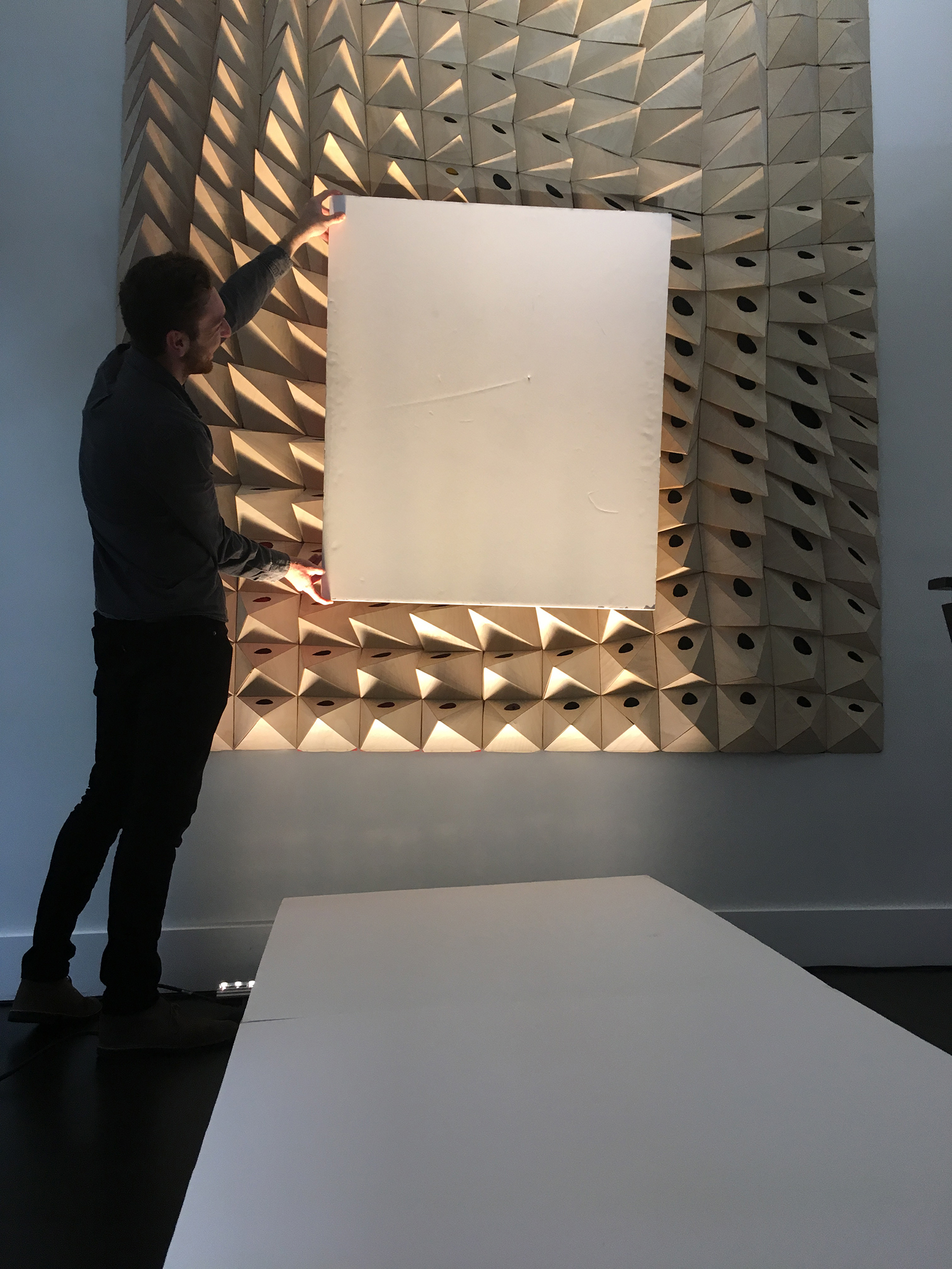As the lighting industry evolves into smaller illumination sources and form factors, more opportunities are realized for accenting a space. The uniqueness of these opportunities present lighting designers with unknown challenges, making seeing luminaires in-person critical to a project’s success. As luminaires get more and more integrated into the architectural details, building a test-run, or a mock-up is a great design tool and the best way to make informed decisions. Mock-ups allow designers to better understand how light interacts with materials, proximity to other elements in the space, and user or occupant interaction. They also allow owner’s and stakeholders to interact with and provide feedback about the proposed lighting elements prior to project completion.
Lighting mock-ups are as much a way to evaluate the performance of the light fixture as they are to evaluate the entire installation detail as well as confirm fixture maintainability. Switching the properties of the building materials, the lensing of the fixture, fixture output, color of the light and the dimensions of the detail all work together to create different effects. In some instances it’s all about the dimensions used to conceal the fixture such that an inexpensive fixture can be tucked away. Other times the material selection that the fixture is illuminating needs to be altered to achieve the desired effect and this is the optimal component of the detail to tweak.
Mock-ups can be a very literal representation of what will happen. Considering this, it is very important to be aware of the components in the mockup that are exact and which are approximations being extrapolated. The more specific and true a mockup can be using actual materials built to scale, the better the results. That said, a TON can be learned from very basic mockups using products on hand. Let’s consider mockups a consolidation of Light Color, Light output, Fixture specification, Detail Dimensions and Building Material Properties.
- Light Color and Building Material Colors: Mocking up the actual color of the light against the actual color of the material is critical. This is the most difficult of the five components to be extrapolated. Using a cooler color temperature of the light and just ‘imagining’ what it looks like warmer can be risky. However, a full scale mockup isn’t required to confirm what color temperature to use. Potentially the color temperature can be selected just holding materials up to lights – and then the actual mockup of the detail in question can be completed at a different color temperature if the team is unable to track down an EXACT sample fixture match. The same goes for selecting the color of the building material, holding up blue flooring and pretending it’s red won’t aide decisions.
- Dimensions: Dimensions can be broken into the dimensions of the detail, and the distance the light needs to throw. The dimensions of the actual custom fixture reveal need to be built to scale. This exactly blocks/allows light out of the detail. It also is a great tool to confirm someone’s hand can access the fixture as required for maintenance. What can be altered however, is the distance the light throws. Potentially a cove detail can be fabricated to scale for the detail itself. Hypothetically, let’s say in the project the cove needs to wash 30’. Building a mockup that is 30’ long would require a lot of logistics. However, holding the cove detail itself up against an existing wall that is 30’ can be done to estimate the distance.
- Building Material Reflection and Fixture Lensing: These components go hand in hand. If the desire is to not see the LED diodes reflected on the surface of the material, either a frosted lens is required or the material needs to be matte. Sometimes both are required, sometimes only one is required. Swapping out lenses and material samples is the best way to evaluate.
- Light Output: The quantity of the light the fixture needs is typically determined thru calculations. Most sample fixtures that are on hand are the highest output so the designers can see the maximum impact the fixture can have and dim from there. Taking FC readings in a mockup does happen, but ambient lighting around the mockup needs to be controlled to not alter the results.
- Fixture specification: Not only can lensing diffuse the light emitting out of the fixture, it can redistribute the light. Mounting channels alter the distribution of the fixture as well. Using the exact fixture, regardless of how similar an alternate appears in the cutsheet, is the only way to confirm how it works. It’s the same as a fine bourbon, you have to taste it to confirm it belongs on the top shelf regardless of the awards claimed on the bottle.
